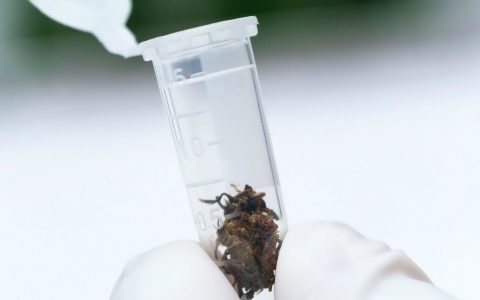Once you’ve decided to start growing cannabis at home, you can easily fall into an overwhelming green hole of information: What strains are easiest to grow? What’s the optimum cycle for indoor lights? Should you grow in soil or coco coir? Use sprays or opt for integrated pest management? It’s enough to drive anyone mad—or at least to the nearest dispensary.
Thankfully, there are lots of excellent resources online—including Leafly’s own dedicated section on growing—and many of them provide helpful information for the general grower. But what about growing locally, right here in Massachusetts?
“You can’t just grow anything, especially with the way the climate is out here.”
Frank Golfieri, INSA asst. head grower
I wanted to know whether there were specific tips and tricks for growing here in the Bay State. So I headed to the INSA cultivation facility in Easthampton to learn more about what it takes to grow cannabis successfully in New England.
INSA’s cultivation center is state of the art and truly makes a home grower salivate. From its water filtration system to the various grow rooms where plants can be seen in different stages of their lifecycle, it was impressive to see cannabis grown on a large scale.
Thankfully, you don’t need a cutting-edge grow center to get a good harvest at home. INSA head grower Matt Livermore and assistant head grower Frank Golfieri shared some Massachusetts-specific tips they’ve cultivated over the years.
Pick the Right Plants
If you’re planning to grow outdoors in Massachusetts—the season here lasts roughly May through November, by the way—make sure you choose the right strains. “You have to find specific ones for this region,” said Golfieri. “You can’t just grow anything, especially with the way the climate is out here. You have to find strands that are more hearty, to handle these conditions.” Kush strains are good options for beginners to consider.
Both Livermore and Golfieri recommend starting from seed if possible to avoid any surprise issues that may be brought into your grow space. When starting with clippings or clones, you can’t be positive that they won’t introduce bacteria, pests, or other pathogens into your garden. Golfieri advised, if you have the space, that you keep new plants in quarantine for a little while to avoid letting introduced pathogens spread to existing plants.
Know Your Seasons
If you’re taking advantage of the outdoor grow period, it’s important to be aware that it stretches across three different seasons—spring, summer, and fall—each with its own specific weather. While fall in other regions may be more temperate, Massachusetts tends to have more rain. Our long, relatively autom thus creates perfect conditions for things like mold to develop.
And while Massachusetts isn’t not known for long periods of scorching heat in the summer, there are frequently spells of little to no rain that can cause issues if you’re unable to water your plants regularly.
Start Indoors
There’s not much that compares to the sight of a majestic, outdoor cannabis plant. When it comes down to it both INSA growers stressed that indoor cultivation is easiest for new growers in Massachusetts. “You can control the environment better,” explained Golfieri. Fluctuating temperatures, long periods of cold or rain, and even unanticipated early freezes won’t matter at all to indoor plants (and more importantly, won’t impact your yield). It’s also far easier to control light conditions indoors.
All that comes with a downside, of course: added cost.
Cleanliness Is Key
To keep plants healthy, it’s crucial to limit their exposure to contaminants. Change into clean clothes before entering your grow room, and keep a separate pair of shoes to avoid tracking in contaminants from outside. Beyond those general tips, though, there are best practices specific to the state.
Water is an often overlooked source of contamination. If you’re not using filtered or distilled water, which both INSA growers recommend, be sure to get a complete readout of your town or city’s water supply. This can usually be done by contacting your local water and sewer agency. While you can test water from the faucet yourself for things like pH levels, a more comprehensive assessment will indicate things like lead and heavy metals, which cannabis plants absorb readily. Heavy metals are of particular concern in Massachusetts, home to a lot of former mill towns.
Get Tested
When you’re dealing with new plants, you want to start with the best. So you might want to start by having the plant, flower, and/or soil tested by one of the labs in the state.
Neither Livermore nor Golfieri were keen on the tests you can order online. “If you want to get it done, spend the money and go take the time to get your terpenes, cannabinoid profile figured out,” says Livermore. “You can find out if there are any microtoxins in the soil, or other things that are a problem. If you’re really that serious about growing, you take it to a reputable lab, for sure!”
Four labs are currently open for testing cannabis in Massachusetts, all in the eastern part of the state. Costs start around $50, and you can choose what type of analysis you’d like to run, from cannabinoid and terpene profiles to various safety tests that check for common concerns such as mold, E. coli, yeast, fungus, and more.
Source of article: https://www.leafly.com/news/growing/grow-your-greatest-tips-tricks-for-massachusetts-cannabis-growers

























